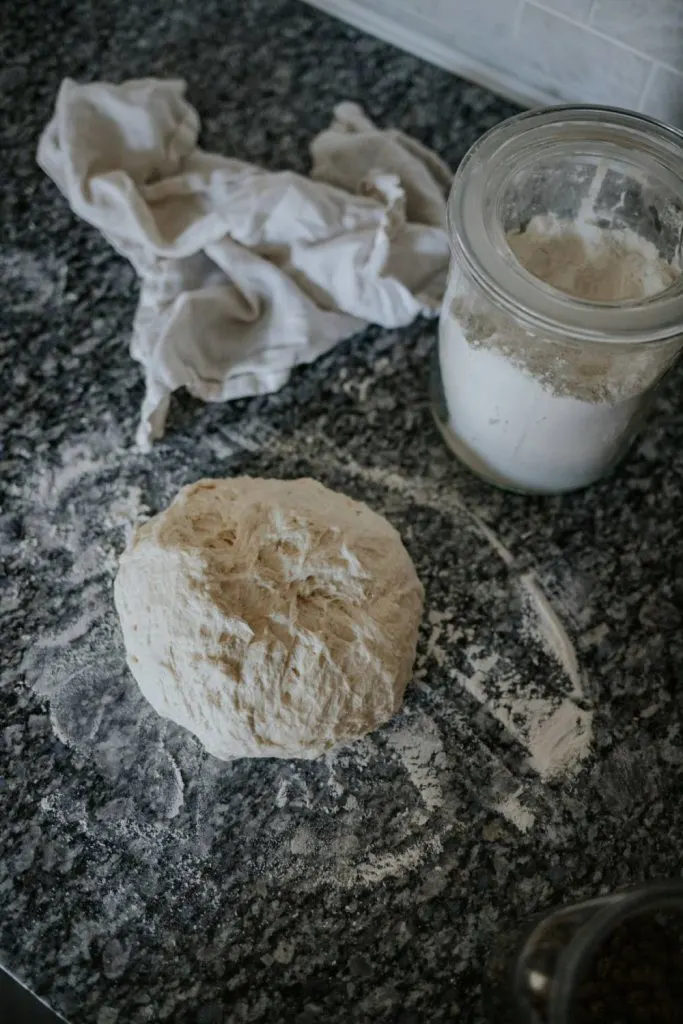
Struggling to maintain the perfect temperature for your sourdough starter? You’re not alone. Many bakers find themselves wrestling with uncooperative climates or unpredictable home temperatures, which can spell disaster for a starter’s health. Fear not! With the right knowledge and tools, keeping your sourdough starter warm and active is easier than you think.
TL;DR: Key Takeaways
- Consistent Warmth: Maintaining a steady, warm environment is crucial.
- Innovative Tools: Use heating pads, lamps, or your oven’s light.
- Insulation Techniques: Wrapping your starter can preserve heat.
- Monitor and Adjust: Regular checks can prevent overheating.
- Expert Tips: Learn from seasoned bakers’ insider secrets.
Keep It Warm: Why Your Sourdough Starter Loves Heat
Temperature management is not just a minor detail—it’s a fundamental aspect of sourdough baking that can dramatically influence the quality and characteristics of your final product. Understanding and controlling the thermal environment of your sourdough starter can be the difference between good and exceptional homemade bread.
Heading into the Heart of Warmth
A sourdough starter is essentially a vibrant colony of yeast and bacteria that thrives in a warm, stable environment. This mix of flour and water becomes a powerhouse of activity when kept at the right temperature, typically between 70°F and 85°F (21°C to 29°C). At these temperatures, the yeast is most active, efficiently converting sugars into carbon dioxide and ethanol, which causes the dough to rise and develop its characteristic tangy flavor.
How Temperature Shapes Every Aspect of Your Sourdough Starter
However, the temperature’s influence on a sourdough starter goes beyond simple fermentation:
- Flavor Development: Warmer temperatures accelerate enzyme activity, leading to more complex flavors in the finished bread. This enzymatic activity breaks down large starch and protein molecules into simpler sugars and amino acids, which not only enhances flavor but also improves nutrient availability.
- Texture Enhancement: Properly managed temperature helps produce a more open crumb structure with the desired chewiness in the crust. The warmer conditions make the gluten in the flour more pliable and easier to stretch, allowing the dough to expand more fully as gases produced by the yeast inflate the gluten balloons.
- Fermentation Speed: Warmth can increase the rate of fermentation, useful when you’re on a tighter baking schedule. Higher temperatures expedite yeast activity, reducing the time needed for the dough to rise sufficiently before baking.
- Resilience of Microbial Culture: Maintaining optimal temperatures can enhance the resilience of your starter by promoting a healthy balance between yeast and beneficial bacteria. This balance is crucial for the long-term viability of your starter, ensuring it can be reused for many baking cycles.
- Consistency in Baking Results: By keeping your starter at a consistent, ideal temperature, you can achieve more predictable fermentation times and baking outcomes. This consistency is particularly valuable for bakers who rely on their sourdough bread for business or frequent home baking.
Conversely, temperatures below the ideal range slow down yeast activity, which can lead to dense, flat breads lacking in flavor and with an undesirable texture. It’s not just about avoiding the cold; overheating your starter can be just as detrimental. Yeast dies at high temperatures, which can cause your starter to stop working altogether.
How to Achieve Perfect Starter Temperatures
Mastering temperature control is essential for any sourdough baker. Here are practical and effective ways to maintain an ideal environment for your starter, ensuring it remains active and vigorous regardless of external conditions.
Maintain Steady Warmth: The Key to Sourdough Success
Creating and sustaining the right temperature can be achieved through various methods, tailored to suit different environments and personal preferences:
1. Heating Pads and Lamps:
- Benefits: Provides consistent heat with adjustable settings.
- How to Use: Place a heating pad set to low beneath the container or position a low-wattage lamp nearby.
- Ideal For: Cold climates or homes without central heating.
2. Oven Light Method:
- Benefits: Utilizes an often overlooked source of heat.
- How to Use: Turn on the oven light to warm the interior slightly. Monitor closely and crack the oven door if it becomes too warm.
- Ideal For: Overnight fermentation and maintaining a gentle, steady temperature.
3. DIY Insulation:
- Benefits: Simple, cost-effective method for temperature control.
- How to Use: Wrap your starter container in a thick towel or place it inside an insulated cooler to maintain warmth.
- Ideal For: Handling fluctuations in household temperatures, especially during night time or in air-conditioned spaces.
4. Room Selection:
- Benefits: Makes use of the warmest areas in your home without extra equipment.
- How to Use: Store your starter in the kitchen or laundry room, near heat-producing appliances.
- Ideal For: Maintaining consistent warmth with minimal setup.
5. Water Bath Technique:
- Benefits: Provides precise temperature control.
- How to Use: Use a sous-vide machine or similar setup to heat a water bath to a constant temperature, then place your starter container in the bath.
- Ideal For: Critical fermentation stages or extremely cold environments where other methods might fall short.

Why This Matters
The effort you put into maintaining the ideal temperature for your sourdough starter will reflect directly in the quality of your bread. Each method mentioned above offers a different balance of convenience, precision, and reliability, allowing you to choose one that best fits your baking routine and environmental conditions.
Remember, the key to a thriving sourdough starter is not just about keeping it warm; it’s about maintaining a consistent and suitable temperature that mimics the natural conditions yeast and bacteria love. By mastering these techniques, you will not only enhance your sourdough starter’s health but also improve the overall quality and consistency of your homemade bread, making each loaf a delicious triumph.
Insider Secrets: Elevate Your Sourdough Game
As an experienced baker, I can’t stress enough the importance of monitoring your sourdough starter’s temperature. A digital thermometer is your best friend here—it helps prevent overheating, which can be fatal to the delicate balance of yeast in your starter. Don’t hesitate to shift your starter’s location with the changing seasons to keep the temperature just right.
Challenging Common Misconceptions: Think Outside the Box
It’s a common misconception that sourdough starters should be kept at room temperature. However, I’ve found that maintaining slightly warmer conditions can drastically speed up the growth and fermentation process, leading to superior bread. Don’t be afraid to warm things up a bit—your starter will thank you!
Keeping the Balance: Avoid Overheating Your Starter
It’s crucial to regularly check your starter’s temperature. Make adjustments to your heating sources as needed to maintain the perfect environment. A thermostat-controlled heating pad is an excellent tool for this, allowing for more precise temperature management.
Expert Advice: Pro-Tips for Sourdough Enthusiasts
One golden rule I live by: always have a backup starter in the fridge. You never know when you might need it! This simple precaution ensures you’re prepared for any baking emergencies. My personal experience has taught me that consistency in warmth not only stabilizes your starter but also enhances the overall quality of your bread. Trust me, putting in the effort to keep your starter warm will pay off in every loaf you bake!
Personal Conclusion
Maintaining the ideal temperature for your sourdough starter might seem tricky, but with the right techniques, it’s entirely manageable. The essence of nurturing a healthy starter is less about rigid rules and more about adapting to your unique environmental conditions. Various methods, from simple DIY insulation to advanced heating tools, can help you create a stable, warm environment that promotes active yeast and beneficial bacteria growth.
The benefits of keeping your starter warm are substantial, affecting everything from flavor development and texture enhancement to fermentation speed. A well-managed temperature ensures your bread achieves the desired airy texture and complex flavors characteristic of excellent sourdough.
Ultimately, the process of maintaining your starter’s temperature is a blend of science and art. It involves observing, adjusting, and learning from each baking experience. Embrace the journey of tweaking your methods to find what best suits your baking style and environment. With patience and persistence, you’ll enhance not only the vitality of your sourdough starter but also the overall quality of your bread, making every loaf you bake a testament to your care and dedication.
Frequently Asked Questions
How often should I feed my warm sourdough starter?
To keep your starter healthy and active, feed it at least once every 24 hours if kept at warm temperatures. Adjust the frequency based on how quickly it rises and falls.
What is the best container to keep my starter warm?
Glass or plastic containers with loose-fitting lids are ideal to allow gas exchange while keeping the temperature stable.
Can I use a microwave to warm my sourdough starter?
Avoid using a microwave to heat your starter directly, as it can easily overheat and kill the yeast. Instead, heat water in the microwave and place the starter container in the warmed environment.
Is it necessary to use a thermometer for my starter?
While not necessary, a thermometer can help you maintain a more precise control over the temperature, which is beneficial for optimal fermentation.
What should I do if my starter gets too hot?
If your starter gets too hot, move it to a cooler location immediately and check if it needs to be fed to dilute any accumulated acids and refresh the yeast and bacteria.
Join Us and Transform >
Don’t Be an Amateur! Master the Art of Sourdough Bread!




Leave a comment